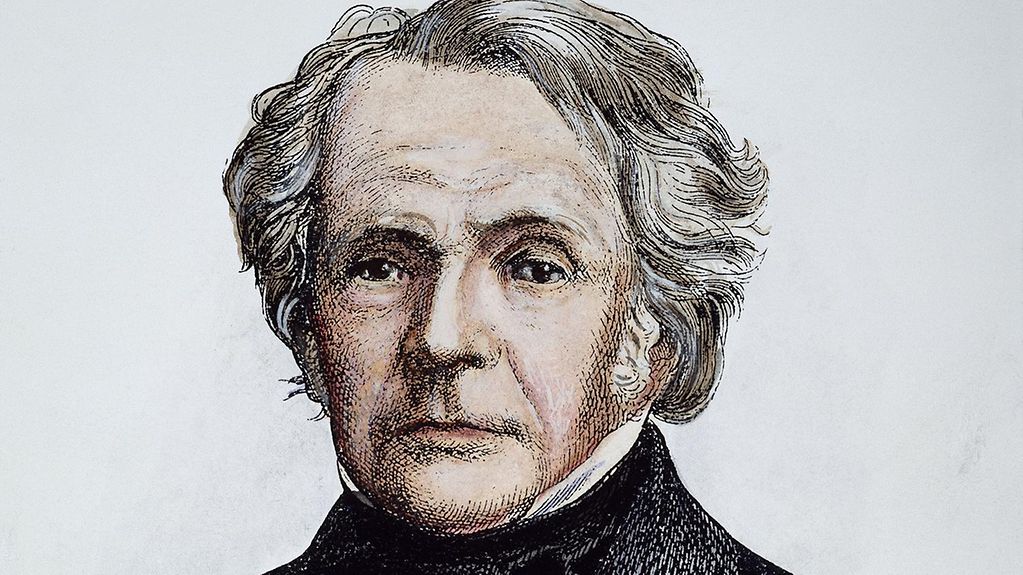Background to the logo
A Möbius strip is the logo of Germany’s Presidency of the Council of the European Union in 2020 – it is entwined and can never be separated. But what is it? Where did it get its name? And why was it chosen as a symbol? Here’s an overview and some instructions on how to make your own Möbius strip.
3 min reading time

Mathematician and astronomer August Ferdinand Möbius (1790-1868) - a simple strip with fascinating properties
Photo: ullstein bild - Granger, NYC
It really couldn’t be easier to make a Möbius strip. All you need is a strip of paper. Bend it into a circle and give it a 180 degree twist before you stick the two ends together to form a ring. This apparently simple object has some fascinating geometric properties.
The following experiment will show you what we mean. Try to colour one side only of a Möbius strip. When you get to the end you will discover that you have coloured both sides. The Möbius strip, in spite of what you might think, is one-sided. As the mathematician and astronomer August Ferdinand Möbius who first invented the strip wrote, the Möbius strip is "…a one-sided surface for which you will need twice as much paint as you initially assumed".
Symbol of unity and connectedness
It has only one side although that does not appear to be the case at first sight. This property of the Möbius strip symbolises the European Union and European decision-making processes in the logo of Germany’s Presidency of the European Union.
It doesn’t matter what side of the Möbius strip you start on, or what direction you move in, you will always meet up on the same side. The EU member states are also interconnected, in spite of all their differences, their national interests and their divergent opinions. And they move forward together along the European path.
August Ferdinand Möbius – the man who gave the strip its name
The mathematician and astronomer August Ferdinand Möbius (1790 - 1868) gave the Möbius strip its name. He came from Pforta and did most of his work at the University of Leipzig. Geometry was Möbius’ special passion. And so it came that in 1858 he described the Möbius strip. Although another German mathematician Johann Benedict Listing (1808 - 1882) also discovered the properties of the strip in the same year, it was Möbius who gave it its name.
Erasmus student of his time
Was Möbius a passionate European by today’s standards? Biographers paint the picture of a scientist who had strong roots in his home state of Saxony. He turned down attractive offers from far-flung universities.
Nevertheless they describe how Möbius was able to use a grant to spend two semesters studying with his contemporary Carl Friedrich Gauß, who was already a renowned mathematician. For that he had to go to Göttingen, which was a foreign country in those days for him, coming from Leipzig. He was practically an Erasmus student of his time.
Entwined and inseparable
If you want to carry on your practical experiments - the Möbius strip has more fascinating properties. Draw a line along the centre of the strip and cut along the line. What do you expect? Probably two separate Möbius strips. But that is not what happens. Astonishingly, you will be left with only one strip, twice as long as the original one and with two twists.
If you cut the Möbius band twice, cutting it into thirds along the length of the strip, the result is even more surprising. The strip does in fact form two loops, but two interlocked loops, one of which is a new Möbius strip. You can never really separate a Möbius strip.